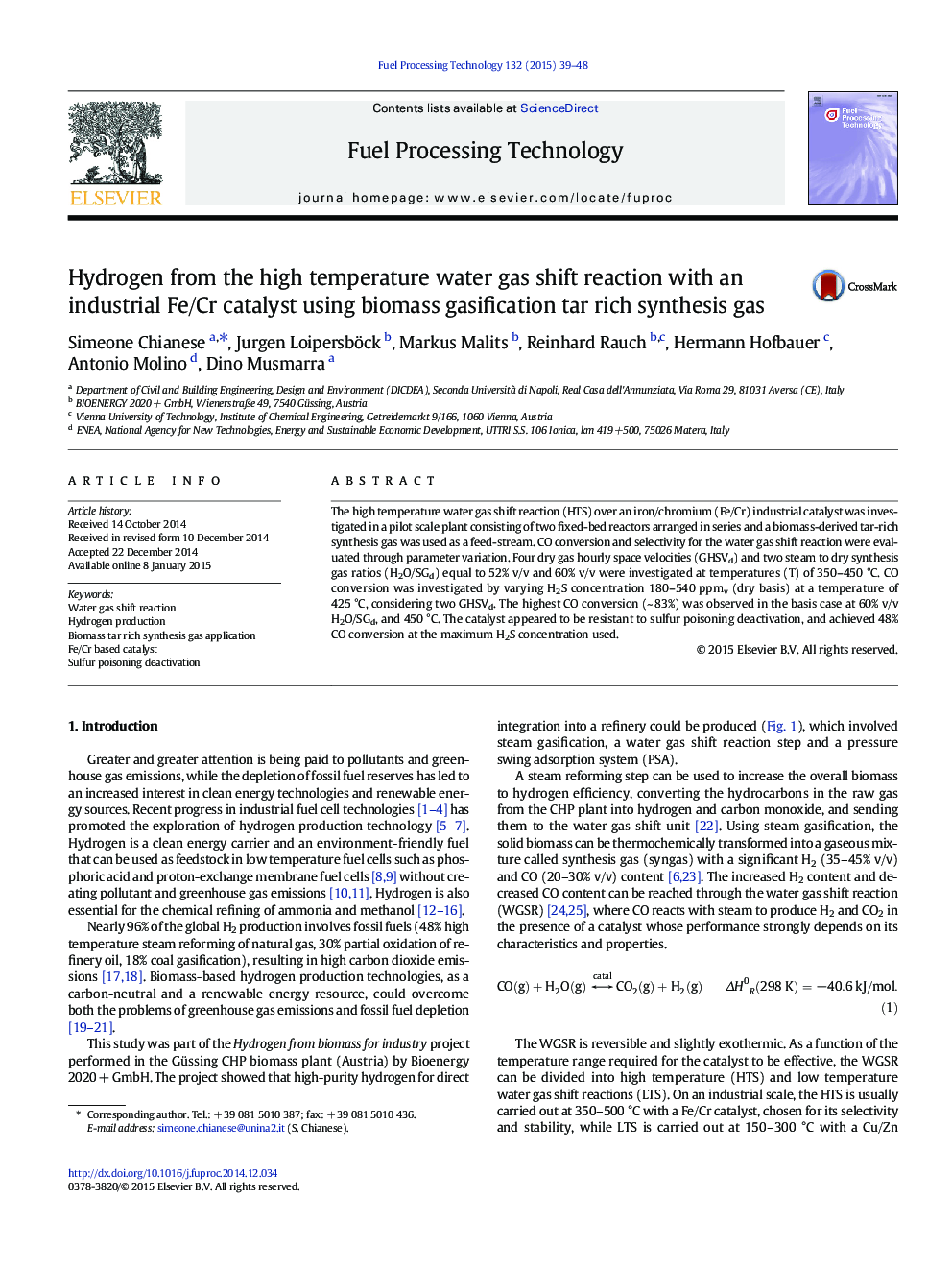| Article ID | Journal | Published Year | Pages | File Type |
|---|---|---|---|---|
| 209590 | Fuel Processing Technology | 2015 | 10 Pages |
•High temperature water gas shift reaction was investigated via parameter variation.•Biomass-derived tar-rich synthesis gas was used as a feed-stream.•CO conversion and selectivity for the water gas shift reaction were evaluated.•Influence of H2S concentration in catalyst activity and stability were assessed.•Influence of Tar concentration on catalyst activity was assessed.
The high temperature water gas shift reaction (HTS) over an iron/chromium (Fe/Cr) industrial catalyst was investigated in a pilot scale plant consisting of two fixed-bed reactors arranged in series and a biomass-derived tar-rich synthesis gas was used as a feed-stream. CO conversion and selectivity for the water gas shift reaction were evaluated through parameter variation. Four dry gas hourly space velocities (GHSVd) and two steam to dry synthesis gas ratios (H2O/SGd) equal to 52% v/v and 60% v/v were investigated at temperatures (T) of 350–450 °C. CO conversion was investigated by varying H2S concentration 180–540 ppmv (dry basis) at a temperature of 425 °C, considering two GHSVd. The highest CO conversion (~ 83%) was observed in the basis case at 60% v/v H2O/SGd, and 450 °C. The catalyst appeared to be resistant to sulfur poisoning deactivation, and achieved 48% CO conversion at the maximum H2S concentration used.
